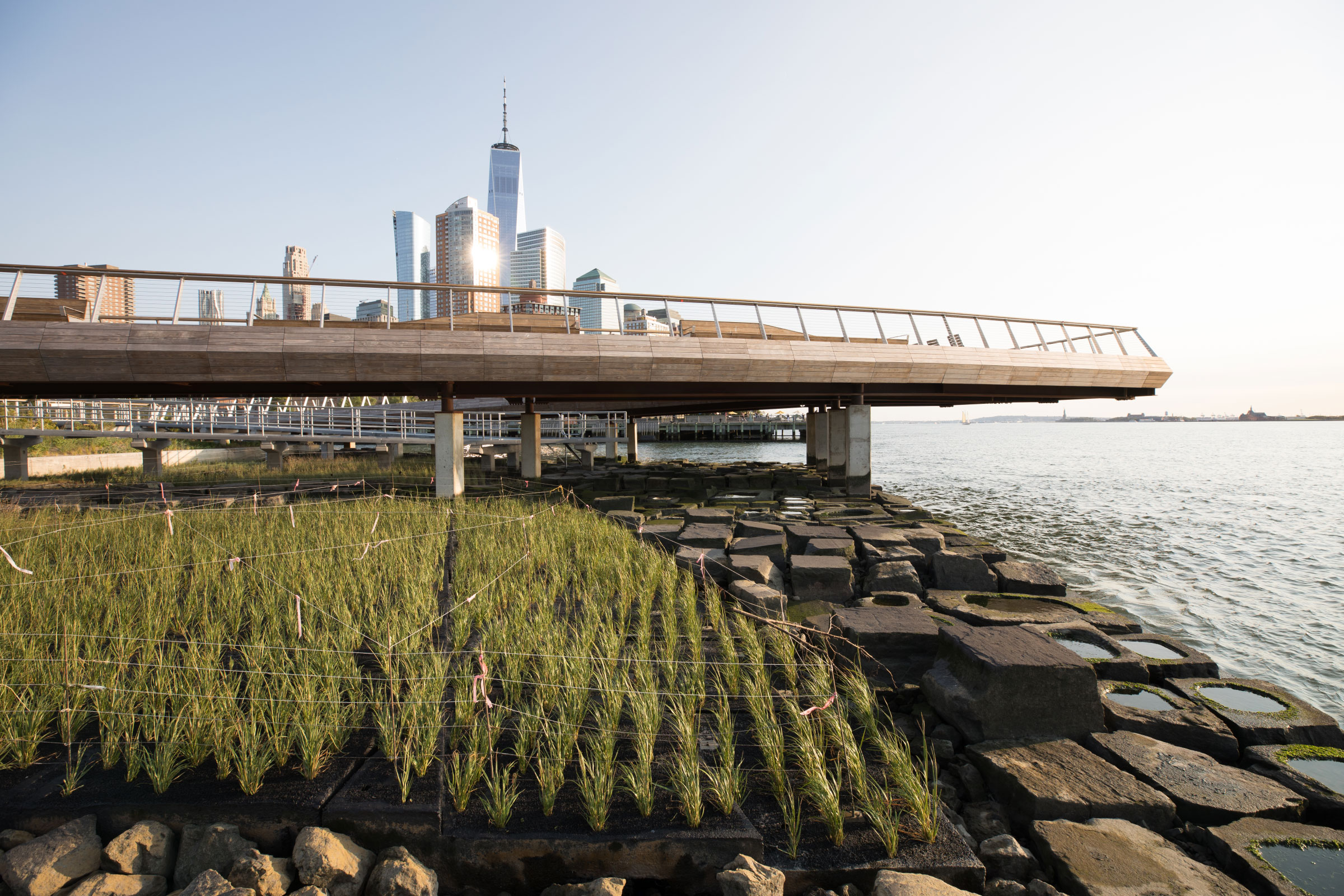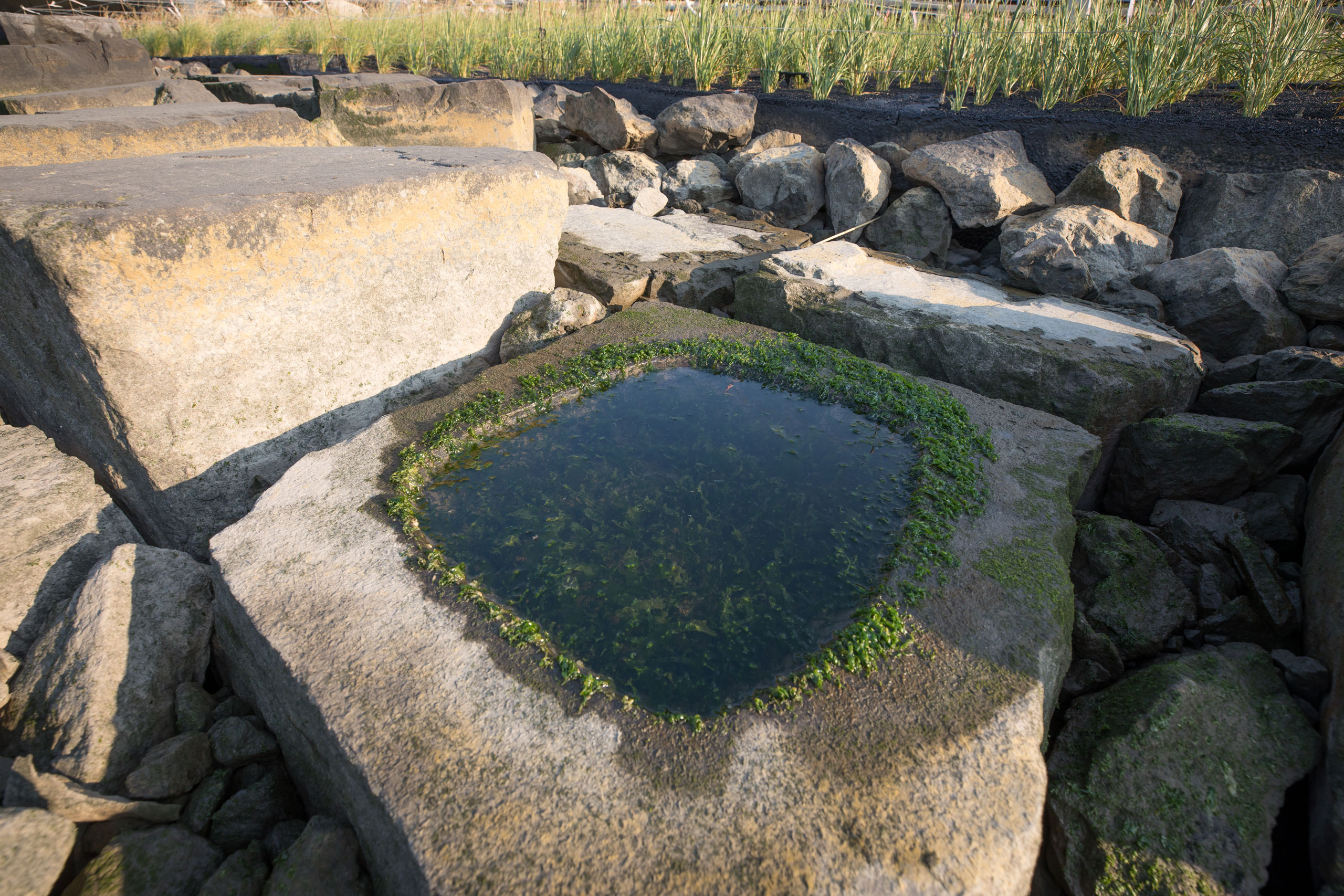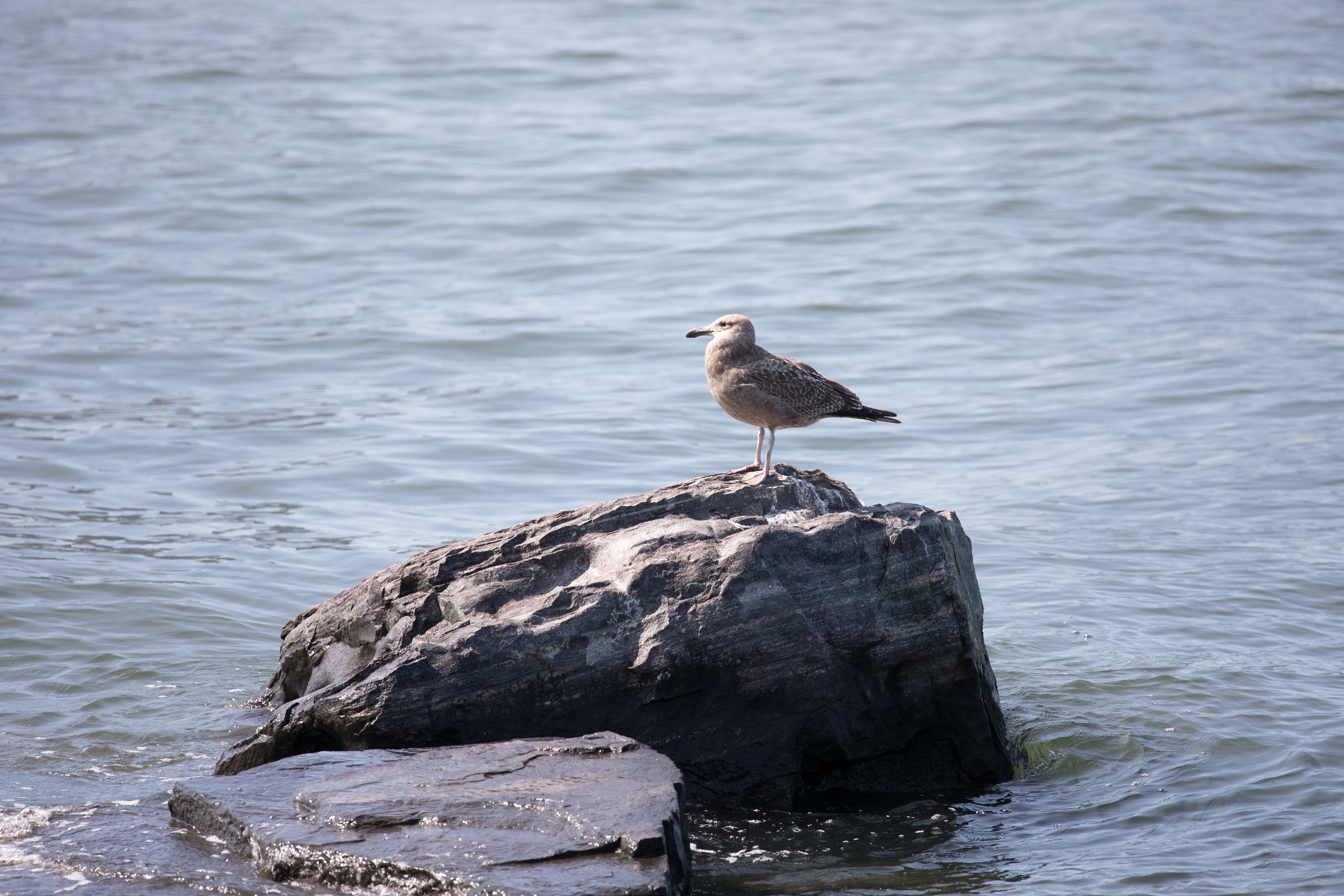The Tide Deck, located at the western edge of Pier 26, is an engineered rocky salt marsh created to provide an immersive and educational river ecology experience for Park patrons—not to mention a supportive environment for wildlife.
As with other salt marshes, the Tide Deck was designed to flood regularly with the daily tidal cycle, giving its native plants and animals nourishment from the Hudson River. This one-of-a-kind ecosystem will be visible from above Pier 26 every day, but it will also be accessible to visitors during guided tours with Park staff.
The Tide Cycle
The Hudson River Estuary, a place where salt water and fresh water mix, experiences two high tides and two low tides every day. During high tide, the Tide Deck is submerged and filter feeders such as oysters and barnacles open their shells to feed on River plankton. Six hours later, at low tide, the Tide Deck is visible, and waterfowl such as mallard ducks take refuge from strong River currents. Different types of animals make use of the platform at different tide cycles.
Habitat Features
- Native Marsh Plantings – The Tide Deck is planted with smooth cordgrass, Spartina alterniflora, which is a common estuarine marsh plant. When planted in a marsh, smooth cordgrass acts as a soil stabilizer and helps control erosion along coastlines.
- Tide Pools – Tide pools are shallow depressions typically carved into rocks that collect River water and become vital basins as the tide recedes. Predators often hunt for food in these small, isolated environments where river plants and animals can be found.
- Submerged Enhancements – Pier 26 and the surrounding Park waters also host structures supporting oysters.
Visit the Tide Deck
Hudson River Park’s River Project staff will periodically offer guided tours of the Tide Deck, providing visitors with an immersive and educational river ecology experience. For guided tours, school groups can book a Shoreline Ecology field trip, while members of the public can explore during our Thursday Big City Fishing programs. These experiences occur seasonally.
Want to dig even further? Reach out the Park’s education team at [email protected].
Design Funding Acknowledgment
- Lower Manhattan Development Corporation through Community Development Block Grants from the U.S. Department of Housing and Urban Development
- NYS Office of Parks, Recreation and Historic Preservation with funding from the Environmental Protection Fund
- NYS Department of State with funds provided under Title 11 of the Environmental Protection Fund
- NYS Environmental Protection Fund through the Hudson River Estuary Program of the NYS Department of Environmental Conservation


